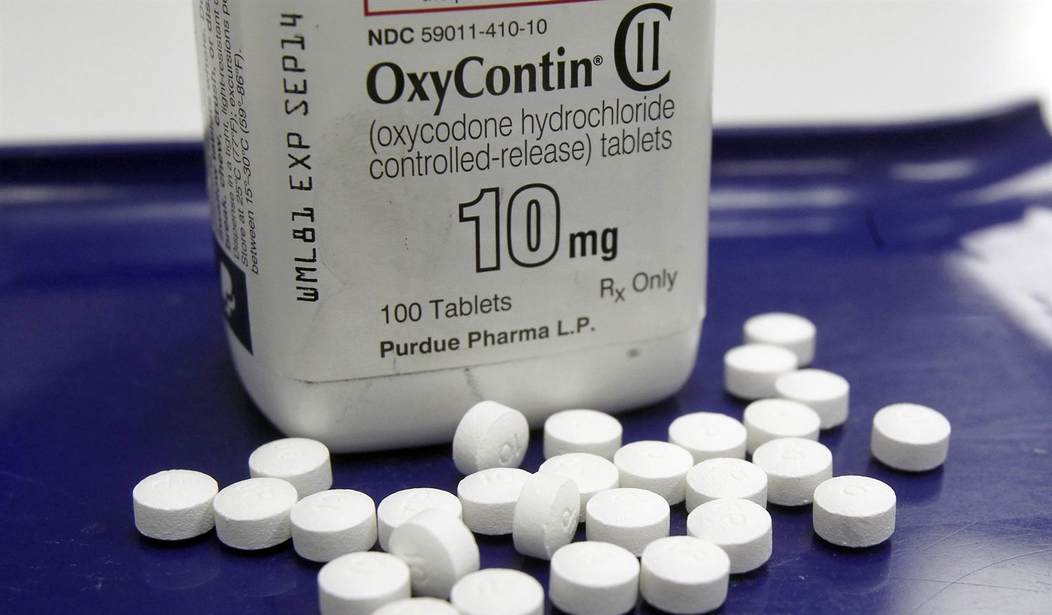Former New York Times reporter Barry Meier, whose book about OxyContin is the main basis for the Netflix drama "Painkiller," acknowledges that the drug is "valuable for treating severe pain caused by cancer or chronic health issues." The problem, he says, was that OxyContin's manufacturer, Purdue Pharma, "could only make billions from it by lying, by saying it was good for everyday, common pain."
Netflix's six-part miniseries highlights that second point, vividly portraying Purdue Pharma's reckless marketing of OxyContin. But it dismisses the caveat: that there are legitimate medical uses for this drug and other prescription opioids, which can make life bearable for patients who otherwise would suffer from excruciating pain.
Like the 2022 Hulu drama "Dopesick," "Painkiller" embraces an indiscriminate aversion to opioids. The same attitude has inspired ham-handed restrictions on pain medication, which have helped drive drug-related deaths to record levels while leaving millions of patients to suffer needlessly.
Although Meier's take on opioids is more nuanced than the one presented by this adaptation of his book, he shares with the screenwriters a desire to pin a complex, long-running social problem on a single villain. That much is clear from the subtitle of his book: "An Empire of Deceit and the Origin of America's Opioid Epidemic."
As Meier's former employer frequently puts it, OxyContin is "widely blamed" for "igniting the opioid crisis." But is it rightly blamed?
OxyContin, which was introduced in 1996, is an extended-release version of oxycodone, a semisynthetic opioid that had long been available in products such as Percocet and Percodan. OxyContin contained a larger dose of oxycodone, which was supposed to be gradually released over a 12-hour period, such that a patient could obtain steady pain relief by taking two pills a day.
Recommended
That safeguard, according to labeling approved by the Food and Drug Administration, was "believed" to reduce the drug's abuse potential. As it turned out, the original design could be readily defeated by crushing the tablets and snorting the powder.
According to federal survey data, however, nonmedical use of prescription pain relievers rose for 11 consecutive years before OxyContin was introduced. And regardless of how appealing it may have been to drug users, OxyContin never accounted for a very large share of the opioid analgesic market.
During litigation, Purdue presented data indicating that OxyContin accounted for just 3.3% of pain pills sold in the United States from 2006 through 2012. After adjusting for potency, ProPublica calculated that the product's "real" market share was more like 16%.
OxyContin likewise accounted for a relatively small share of nonmedical use: about 17% in 2009, the year before it was reformulated. It is hard to reconcile these numbers with the idea that OxyContin was "the origin of America's opioid epidemic."
If "Painkiller" merely exaggerated the impact of one product, we might chalk it up to dramatic license. But because this product is not qualitatively different from other opioid analgesics, "Painkiller"'s indictment of OxyContin amounts to an indictment of the whole drug category.
The episodes are introduced by grieving parents who tell true stories about deadly addictions, some of which involved patients who received OxyContin prescriptions. But such outcomes are far from typical.
Among patients who use opioids for chronic pain, according to a 2016 research review in The New England Journal of Medicine, "rates of carefully diagnosed addiction" averaged less than 8%. The authors concluded that "addiction occurs in only a small percentage of persons who are exposed to opioids -- even among those with preexisting vulnerabilities." In 2021, a California judge who examined the relevant evidence likewise estimated that the addiction rate is "less than 5%."
"Painkiller" aims to stoke outrage at clueless doctors who carelessly prescribed OxyContin because they believed Purdue's hype. Yet the misconceptions it reinforces have resulted in a different sort of outrage, reflected in the headline above a recent New York Times video: "They Live in Constant Pain, but Their Doctors Won't Help Them."
























Join the conversation as a VIP Member